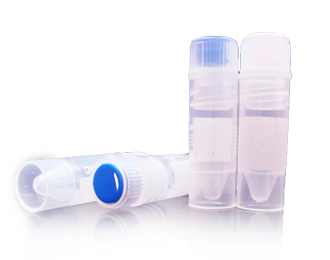Antibody
-
20411
Purified freeze-dried antibody to human type IV collagen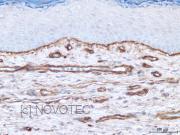
Human
Type IV collagenType IV collagen is a sheet-forming type of collagen found in basement membranes where it serves a critical scaffolding function. In mammals, six proteins make up the type IV collagen family with the distribution of family members being tissue-specific. Structurally, three collagen IV...
-
20421
Purified freeze-dried antibody to bovine type IV collagen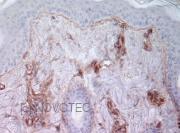
Bovine
Type IV collagenType IV collagen is a sheet-forming type of collagen found in basement membranes where it serves a critical scaffolding function. In mammals, six proteins make up the type IV collagen family with the distribution of family members being tissue-specific. Structurally, three collagen IV...
-
20441
Purified freeze-dried antibody to rat type IV collagen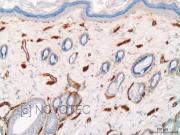
Rat
Type IV collagenType IV collagen is a sheet-forming type of collagen found in basement membranes where it serves a critical scaffolding function. In mammals, six proteins make up the type IV collagen family with the distribution of family members being tissue-specific. Structurally, three collagen IV...
-
20451
Purified freeze-dried antibody to mouse type IV collagen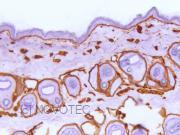
Mouse
Type IV collagenType IV collagen is a sheet-forming type of collagen found in basement membranes where it serves a critical scaffolding function. In mammals, six proteins make up the type IV collagen family with the distribution of family members being tissue-specific. Structurally, three collagen IV...
-
20491
Purified freeze-dried antibody to porcine type IV collagen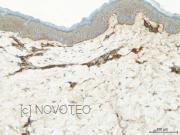
Porcine
Type IV collagenType IV collagen is a sheet-forming type of collagen found in basement membranes where it serves a critical scaffolding function. In mammals, six proteins make up the type IV collagen family with the distribution of family members being tissue-specific. Structurally, three collagen IV...
-
20611
Purified freeze-dried antibody to human type VI collagen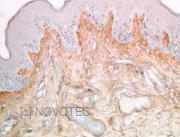
Human
Type VI collagenType VI Collagen is a major structural component of microfibrils. The basic structural unit of collagen VI is a heterotrimer of the alpha1(VI), alpha2(VI), and alpha3(VI) chains. Mutations in the genes that code for the collagen VI subunits result in the autosomal dominant disorder,...
-
20931
Purified freeze-dried antibody to chicken type IX collagen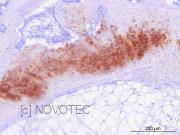
Chicken
Type IX collagenType IX collagen is a minor (5-20%) collagen component of hyaline cartilage. Type IX collagen is usually found in tissues containing type II collagen, a fibrillar collagen. Studies in knockout mice have shown that synthesis of the alpha 1 chain is essential for assembly of type IX...
-
21121
Purified freeze-dried antibody to bovine type XI collagen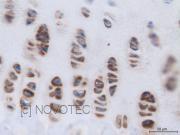
Bovine
Type XI collagenType XI collagen is a minor fibrillar collagen . Type XI collagen is a heterotrimer but the third alpha chain is a post-translationally modified α1(II) chain. Mutations in this gene are associated with type II Stickler syndrome and with Marshall syndrome. Multiple transcript...
-
24811
Purified freeze-dried antibody to human laminin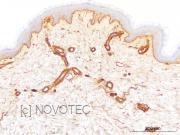
Human
LamininLaminin, an extracellular protein, is a major component of the basement membrane. It is thought to mediate the attachment, migration, and organization of cells into tissues during embryonic development by interacting with other extracellular matrix components. It is composed of three...

